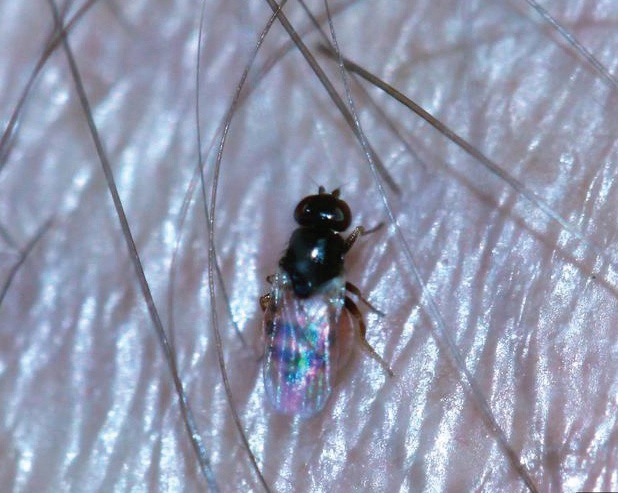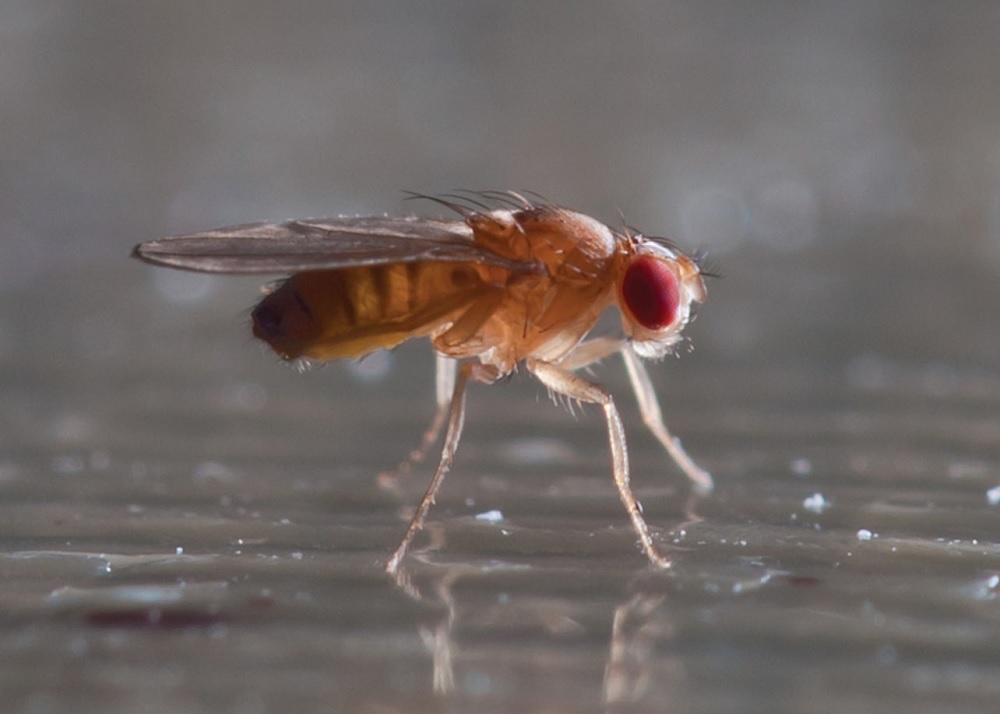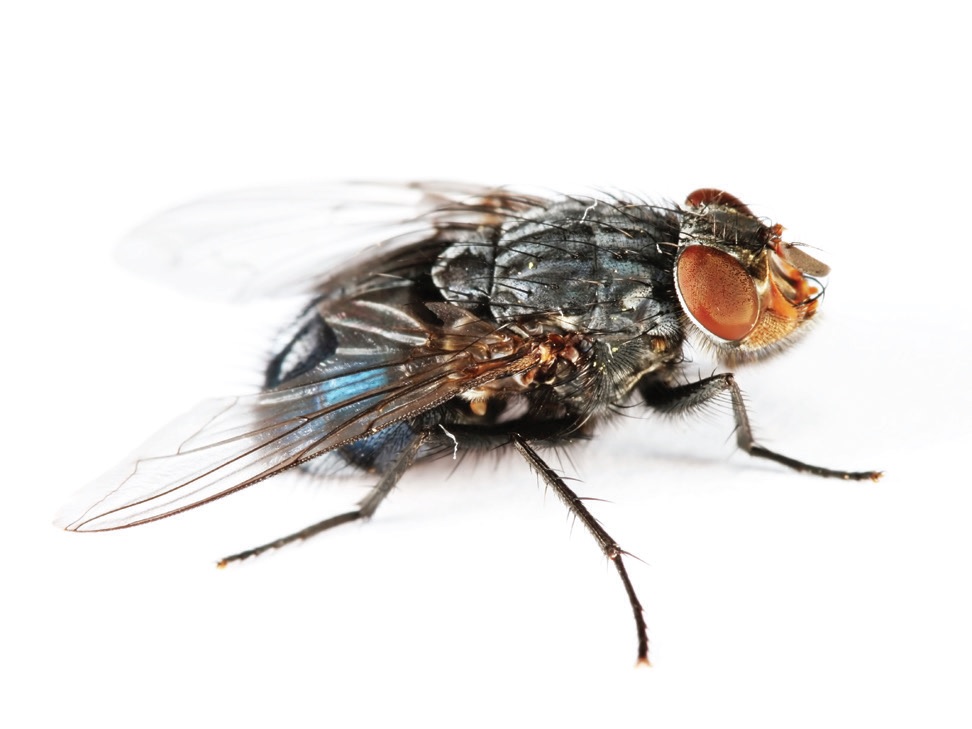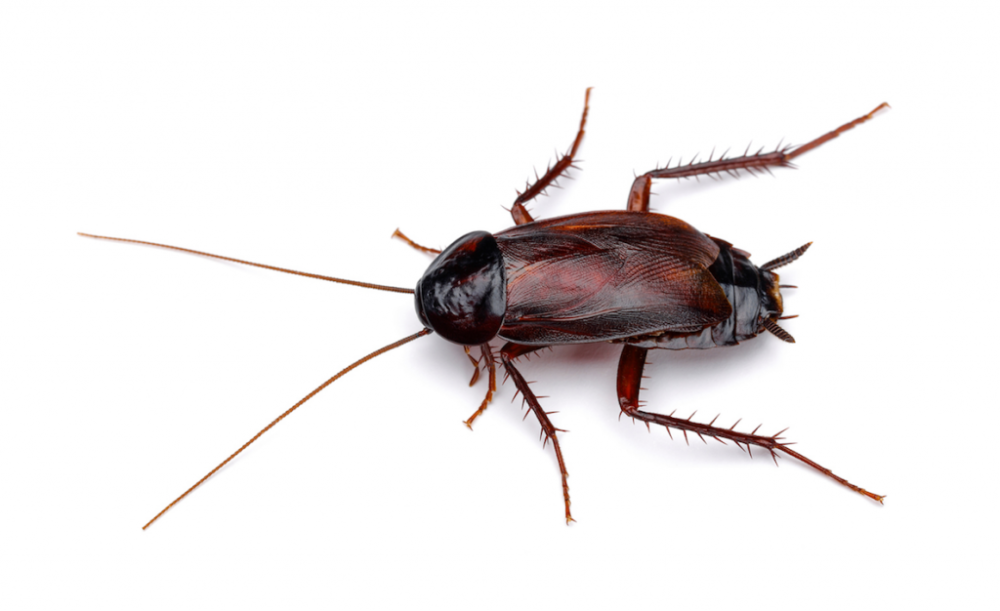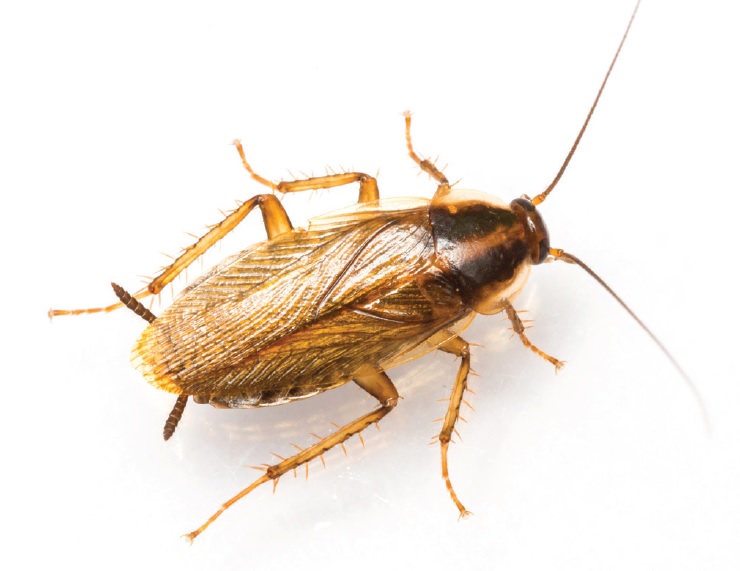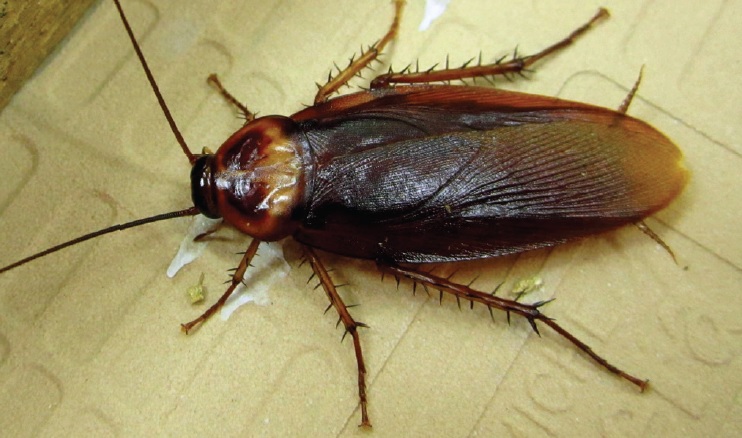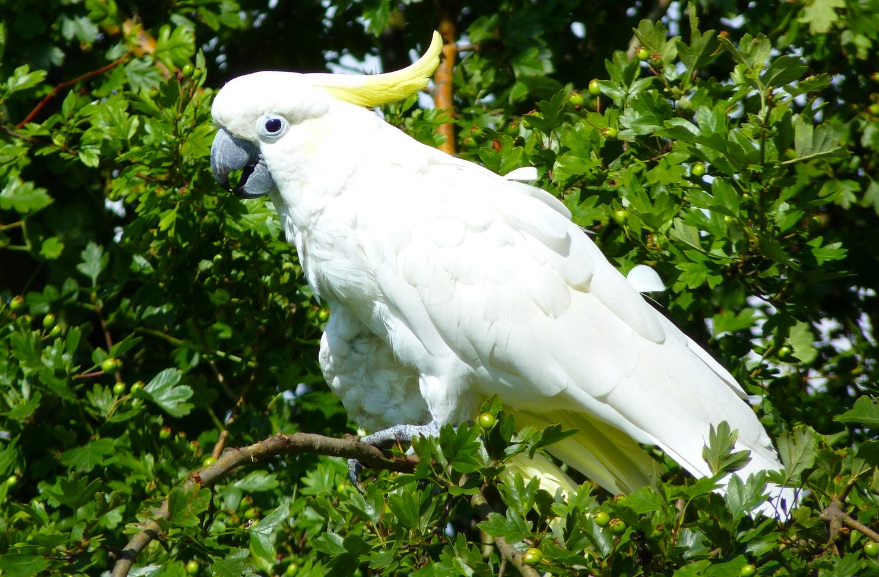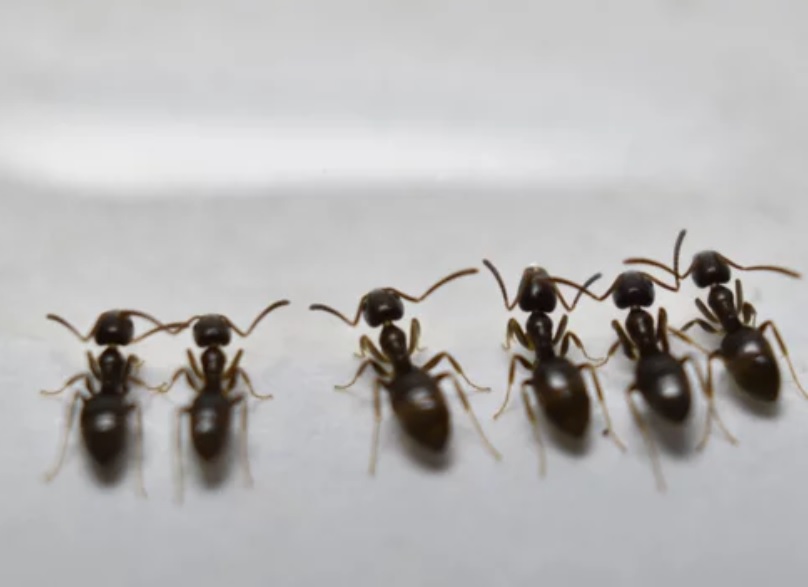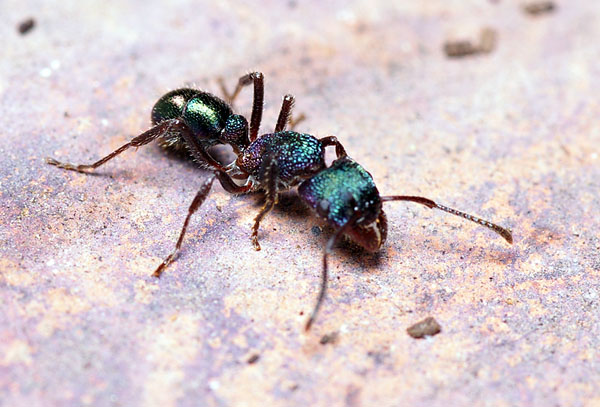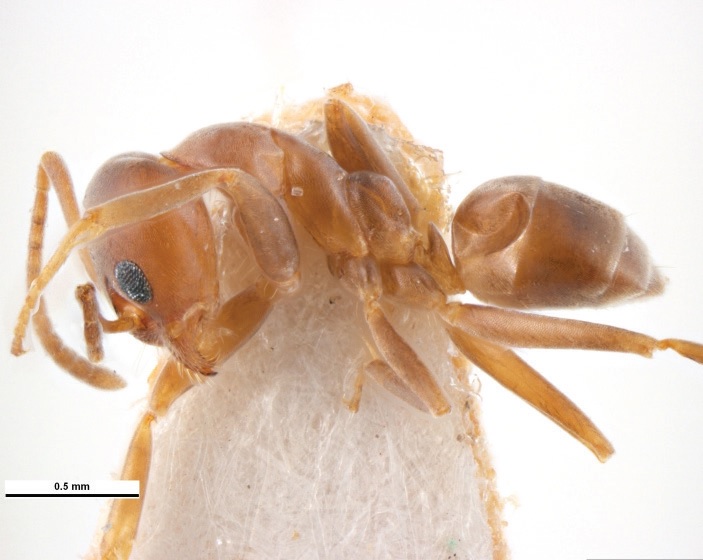I have a problem with ...
Ticks
Ticks are small, wingless, bloodsucking arthropods. They burrow their heads into their host and can change drastically in shape, color and size when they become engorged with blood. Ticks have extremely small mouths that usually go unnoticed when they bite.
entific Name: Ixodida family How to identify a tick Ticks are small, wingless, bloodsucking arth...
Silverfish
Silverfish are wingless insects. Their tapered body and fast wriggling movement, along with their silvery scales gives them some “fish-like” features.
Scientific Name: Lepisma saccharina How to identify a Silverfish Silverfish are wingless insect...
Feral Rabbits
Feral rabbits can be found in many different habitats across Australia, ranging from deserts to coastal plains — wherever there is suitable soil for digging warrens. They are scarce in areas with clay soils and abundant where soils are deep and sandy, such as in the north-east of South Australia.
its Scientific Name: Oryctolagus cuniculus How to identify Rabbits The male is called a buck and ...
Pill Bug/Slater
Although there are a number of difference species which vary in colour and size, they all have a similar appearance – a small armoured bug (not an insect), grey / brown in colour with 7 body segments and 7 pairs of legs. Young slaters look very similar to adult slaters on hatching from the eggs, except they only have 6 body segments / 6 pairs of legs
later Scientific Name: Armadillidium vulgare How to identify a Pill Bug/Slater Although there ar...
Papernest Wasps
Paper wasps have a small head, with medium sized eyes and medium length antennae. The body is slender, with a very narrow waist. There are two pairs of brown-tinted wings, with the first pair larger. The abdomen has some yellow/orange bands, but is mainly black. Recently, the introduced Asian Paper Wasp (Polistes chinensis) has been reported from several inner city suburbs of Sydney.
Wasps Scientific Name: Polistes gallicus How to identify a papernest wasp Paper wasps have a smal...
Millipedes
Millipedes, vary in size and colour (depending on species). The portuguese variety is black and up to 45 mm long. May vary in the number of body segments, but they always have 2 pairs of legs per segment (centipedes have one pair of legs per segment). Young millipedes look just like the adults (only smaller).
Scientific Name: Eurymerodesmus spp. How to identify a Millipede Millipedes, vary in size and ...
Litter Beetle
Adult litter beetles are dark brown and 6-7 mm long, beetle larva are light brown-yellow in colour.
tle Scientific Name: Alphitobius diaperinus How to identify a litter beetle Adult litter beetles...
House Crickets
Adult house crickets are light yellowish brown in colour with three dark crossbands on their head. They are about 3/4 – 7/8 inch in length and have a threadlike antenna that is often longer than its body, and wings that lie flat on its back. Nymphs are wingless but otherwise look similar to adults.
kets Scientific Name: Acheta Domesticus How to identify a house cricket Adult house crickets are...
Feral Cats
Feral cats are the same species as domestic cats, however they live and reproduce in the wild and survive by hunting or scavenging. They are found all over Australia in all habitats, including forests, woodlands, grasslands, wetlands and arid areas. The map illustrates the estimated abundance of feral cats across the country.
Scientific Name: Felis catus How to identify Feral cats Feral cats are the same species as domes...
European Wasps
Europen wasps are a stout wasp with a bright yellow and black banded abdomen, and a pair of black spots on each yellow band. They have two pairs of wings with the first pair larger than the second. They have black antennae and fly with their legs held close to the body.
asps Scientific Name: Vespula germanica How to identify European Wasps European wasps are a stout...
European Red Fox
Foxes are small, active canids with a reddish-brown coat above, with white underparts except for a black tipped nose and lower legs. They also have a large, very noticeable, bushy tail that is white tipped.
ed Foxes Scientific Name: Vulpes Vulpes How to identify European Red Foxes Foxes are small, acti...
Earwigs
Earwigs have an elongated and flattened or cylindrical body. They can be winged or wingless, and they have chewing mouthparts. The abdomen is long, flexible and telescopic (segments of the abdomen may be drawn into one another like a telescope). The two forcep-like cerci on the end of the abdomen are heavily sclerotised (hardened) and vary in shape and size between species.
cientific Name: Dermaptera How to identify an earwig Earwigs have an elongated and flattened or cy...
Dog Flea
Fleas are small, wingless insects and species range in size from 1 – 10 millimetres. They are easily recognised by the majority of the world’s population, especially those who own cats or dogs.
Scientific Name: Ctenocephalides canis How to identify a dog flea Fleas are small, wingless insec...
Clothes Moth
There are actually two main species of clothes moth, the webbing clothes moth and the case-making clothes moth. The adult Webbing moth is light, gold coloured less than 1 cm long.
th Scientific Name: Tineola bisselliella How to identify a clothes moth There are actually two m...
Cat Flea
Fleas are small, wingless insects and species range in size from 1 – 10 millimetres. They are easily recognised by the majority of the world’s population, especially those who own cats or dogs.
Scientific Name: Ctenocephalides felis How to identify a cat flea Fleas are small, wingless insect...
Carpet Beetle
Although there are a number of different species of carpet beetle, the most common species is the Variegated Carpet Beetle. (All the species have similar behaviours and appearance, although the colour of the adult beetle may differ).
tle Scientific Name: Anthrenus verbasci How to identify a carpet beetle Although there are a num...
Biting Midge / Sandfly
Biting midges (often referred to as “sandflies”) are small biting flies about the size of a pin-head belonging to the Ceratopogonidae family. They are especially prolific in coastal areas of tropical and subtropical Australia where some species can cause significant pest problems. They make up for their small size with the large numbers in which they can occur and their painful bite.
ge/Sandfly Scientific Name: Family Ceratopogonidae How to identify a biting midge Biting midges ...
Bird Mites
Bird mites are not insects as some of the public may think as they have eight legs and two body parts. The most common mite associated with bird nests is the “Starling mite” or “Tropical fowl mite”
Scientific Name: Nephila spp. How to identify a Bird Mites Bird mites are not insects as some ...
Subterranean Termites
Members of the Coptotermes genus are easily distinguished from other termites when the soldier is poked or lightly squeezed, upon which a white milky liquid is secreted from a specially modified pore (fontanelle) in the front of the head as a defence mechanism
an Termites Scientific Name: Coptotermes, Schedorhinotermes, Nasutitermes, Mastotermes, Heteroter...
Drywood Termites
Unlike other termites, drywood termites get their water from the timber they consume and therefore do not require contact with the soil. Because of this fact, their galleries are clean and free of soil. However there is one thing present that will give away that drywood termites caused the damage: the presence of dry, sesame seed-like frass (faeces) throughout the gallery system and on horizontal surfaces in close proximity to the infestation.
rmites Scientific Name: Cryptotermes spp. How to identify drywood termites Unlike other termites,...
Dampwood Termites
Porotermes adamsoni is one such dampwood termite associated with damaging timbers in houses and is found in the coastal belt and associated ranges from southern Queensland around to South Australia (including ACT) and also in Tasmania.
ermites Scientific Name: Porotermes adamsoni, Neotermes insularis, Glyptotermes sp How to identi...
Warehouse Beetle
Adult warehouse beetles are oval in shape, 1.8 to 3.0 mm long. They are light to dark brown in colour and covered with fine hairs. The elytra have various pale markings according to the species concerned.
Beetle Scientific Name: Trogoderma variabile How to identify a warehouse beetle Adult warehouse ...
Saw-toothed Grain Beetle
Saw-toothed grain bettles are small, slender, flattened, brown beetles, 3 to 3.5 mm long. They are easily distinguished by the 6 saw-like "teeth" on each side of the thorax.
d Grain Beetle Scientific Name: Oryzaephilus surinamensis How to identify a saw-toothed grain bee...
Rice Weevil
Adult rice weevils are 2.5 – 3.5 mm long, somewhat smaller than granary weevil. It is reddish brown, with 4 faint reddish or yellowish spots on the elytra, round or irregularly shaped punctures on the pronotum and with the typical long, slender snout at the front of the head
l Scientific Name: Sitophilus oryzae How to identify a rice weevil The adult is 2.5 – 3.5 mm l...
Lesser Grain Borer
Adult lesser grain borers are about 3 mm long, polished reddish brown or black and the head and thorax have a pitted appearance. Rhyzopertha dominica is almost cylindrical and the head cannot be seen from above. Although small, this insect has powerful jaws with which it can bore directly into wood and paper.
in Borer Scientific Name: Rhyzopertha dominica How to identify a lesser grain borer The adult is...
Indian Meal Moth/Pantry Moth
Adult indian meal moths have a wingspread of about 20 mm. The wings are bi-coloured cream and the outer portion of the forewing is reddish brown, with a coppery lustre. The adults are often seen flying about in the home and have often been mistaken for clothes moths but the wing colour is very distinct from the uniform grey of the clothes moth's wings
l Moth/Pantry Moth Scientific Name: Plodia interpunctella How to identify Indian Meal/Pantry Moth...
Flour Beetles
Flour bettles are small, reddish-brown beetles, 2.6 to 4.4mm in length. Flour beetles are extremely common stored product pests and are found in household pantries and commercial food manufacturers and distributors. They are pests of dried material of plant and animal origin but especially stored grains and grain products, peas, beans, shelled nuts, dried fruits, spices, chocolate, cayenne pepper and other materials
le Scientific Name: Tribolium species How to identify a flour beetle Tribolium confusum and T. c...
Drugstore Beetle
Adult drugstore beetles are oval and globular in shape and 3.0 to 4.0 mm long. The colour is uniformly reddish to reddish brown. Very fine hairs are arranged in longitudinal rows on the elytra. The drugstore beetle can be distinguished from the cigarette beetle by the distinctly striate elytra, the 3 enlarged segments at the tips of the antennae and by the less hairy larva.
Beetle Scientific Name: Stegobium paniceum How to identify a drugstore beetle The adult is oval ...
Cigarette Beetle
Adult cigarette beetles are light brown, small, oval and about 3 mm long. The head and prothorax are bent downward so as to give the insect a strongly humped appearance. It has occasionally been confused with the drugstore beetle (Stegobium paniceum) but L. serricorne has serrate antennae and smooth elytra, whereas in S. paniceum the last 3 antennal segments are long and broad, forming a distinct "club” and the elytra are striate.
Beetle Scientific Name: Lasioderma serricorne How to identify a cigarette beetle The adult beetl...
White-Tailed Spider
White-tailed Spiders have a dark reddish to grey, cigar-shaped body and dark orange-brown banded legs. The grey dorsal abdomen bears two pairs of faint white spots (less distinct in adults) with a white spot at the tip; the male has a hard, narrow plate or scute on the front of the abdomen.
ed Spider Scientific Name: Lampona cylindrata How to identify a white-tailed spider White-tailed ...
Sydney Funnel-Web Spider
Sydney Funnel-webs are shiny, dark brown to black spiders with finger-like spinnerets (silk-spinning organs) at the end of their abdomen. Males have a large mating spur projecting from the middle of their second pair of legs. If threatened, Sydney Funnel-webs show aggressive behaviour, rearing and displaying their impressive fangs.
nel-Web Spider Scientific Name: Atrax robustus How to identify a Sydney funnel-web spider Sydney ...
St Andrew's Cross Spider
St Andrew's Cross Spiders are named for their bright web decorations - zig-zag ribbons of bluish-white silk that form a full or partial cross through the centre of the orb web.
s Cross Spider Scientific Name: Argiope spp. How to identify a St Andrew's Cross Spider St Andre...
Redback Spider
Redback spiders (Latrodectus hasselti) belong to the Family Theridiidae, which is found worldwide. Female Redback Spiders are black (occasionally brownish) with an obvious orange to red longitudinal stripe on the upper abdomen, with the red stripe sometimes being broken, and an "hourglass" shaped red/orange spot on the underside of the abdomen.
ider Scientific Name: Latrodectus hasselti How to identify a redback spider Redback spiders (Latr...
Huntsman Spider
Huntsman spiders are large, long-legged spiders. They are mostly grey to brown, sometimes with banded legs. Many huntsman spiders, especially Delena (the flattest), and including Isopeda, Isopedella and Holconia, have rather flattened bodies adapted for living in narrow spaces under loose bark or rock crevices.
pider Scientific Name: Family Sparassidae How to identify a huntsman spider Huntsman spiders are ...
Golden Orb Weaving Spider
Golden Orb Weaving Spiders are large spiders with silvery-grey to plum coloured bodies and brown-black, often yellow banded legs.
Weaving Spider Scientific Name: Nephila spp. How to identify a Golden Orb Weaving Spider Gold...
Daddy-Long-Legs Spider
Daddy-long-legs spiders are easily recognised by their extremely long, skinny legs and small body. Pholcus phalangioides has a brown patch on its pale carapace and a cream to pale brown, lightly patterned abdomen.
-Legs Spiders Scientific Name: Pholcus phalangioides How to identify a Daddy-long-legs Spider Da...
Black House Spider
The Black House Spider (Badumna insignis) is a dark robust spider, with grey hairs usually visible on the carapace. Females are larger than males but there is a great range in adult sizes. The carapace and legs are dark brown to black, and the abdomen is charcoal grey with a dorsal pattern of white markings (sometimes indistinct).
e Spider Scientific Name: Badumna insignis How to identify a black house spider The Black House S...
Roof Rat
Roof rats have a head and body length of 165- 205 mm, a tail length of 185-245 mm and a body weight of 95-340 g. It's tail is longer than its body which makes it easy to identify. It has relatively large eyes and ears. Its colour ranges from black to light brown.
Scientific Name: Rattus rattus How to identify a roof rat Roof rats have a head and body length of...
House Mouse
House mice have a combined head and body length of 60-95 mm, a tail length of 75-95 mm and a weight of 10-25 g. They have a slender body, a pointed nose with fairly large ears and a fur colour of brown to grey.
e Scientific Name: Mus musculus How to identify a house mouse House mice have have a slender body...
Brown Rat or Norway Rat
Brown rats are stocky, with scruffy brown fur, small eyes, short ears and a short, thick tail. They have a combined head and body length of 180-255 mm, a tail length of 150-215 mm and a weight of 200-400g.
or Norway Rat Scientific Name: Rattus norgevicus How to identify a brown/norway rat Brown rats ar...
Mosquito
Mosquitoes can be found in a variety of environments but are often found in areas with water sources. The mosquito can exploit a range of fresh and salt water sources – natural or artificial - for breeding habitats.
Scientific Name: Family Culicidae How to identify a mosquito Adult mosquitoes both have a long pr...
Sciarid Fly
Sciarid (family Sciaridae) are an extremely widespread family of small flies. They are small delicate black flies about 3 mm long with long antennae and legs. The larvae are legless, about 4-5 mm long when fully grown, and have clear segmented bodies and black heads.
y Scientific Name: Family Sciaridae How to identify a sciarid fly Sciarid (family Sciaridae) are...
Phorid (Hunchback) Fly
Adult huncback flies are small to minute in size with a relatively large thorax, hence the common name of “Hunchback” flies. The hunchback fly larvae are commonly found in large numbers in decomposing organic matter and scavenging in carrion. The flies can be found on premises around pot plants or garden beds.
nchback) Fly Scientific Name: Family Phoridae How to identify a Phorid Fly Adult Phorid flies ar...
House Fly
Adult house flies are commonly found in domestic dwellings and are often seen trying to land on your dinner plate. The larvae can be found in the excrement of animals and also in decomposing organic matter e.g. compost heaps.
Scientific Name: Musca domestica How to identify a house fly The house fly (Musca domestica) vari...
Fruit Fly / Vinegar Fly / Fermentation Fly
Fruit flies (Dacus spp.) are important pests to commercial industries and can cause much economic damage if unchecked. The adults feed on sap, nectar, honeydew and droppings. Vinegar (Fermentation, Bar or Beer) flies may become a nuisance in homes, restaurants, fruit markets, etc., especially when associated with decaying or rotting fruit and vegetables.
/ Vinegar Fly / Fermentation Fly Scientific Name: Family Drosophilidae How to identify a fermenta...
Flesh Fly
Flesh flies (family Sarcophagidae) are 11-13 mm long with a striped thorax, a patterned abdomen with or without a red/brown tip. Although a few flies may be of benefit to nature, more often than not, flies are a nuisance pest affecting human lifestyles. Diseases such as typhoid, cholera, diarrhoea, amoebic dysentery, giardiasis and worms (pin and tape) are spread mechanically by flies.
Scientific Name: Family Sarcophagidae How to identify a flesh fly Flesh flies (family Sarcophagi...
Drain Fly/Moth Fly
Adult drain flies are tiny (4-5mm long), fuzzy, dark or greyish insects with the body and wings densely covered with hairs. They have long antennae. Wings, appearing too large for the body, are held roof-like over the body when at rest, giving a moth like appearance. They are weak fliers and make irregular, hesitating flights covering only a metre or so in short, jerky lines.
Moth Fly Scientific Name: Family Psychodidae How to identify a drain fly Drain flies are also kn...
Blow Fly
Blow flies are 11- 13 mm long or larger and vary in colour from black, blue, green and bronze. The adults are strongly attracted to moisture and feed mainly on nectar, honeydew and other sweet liquids. Although they can be found in massive numbers at times, blow flies are not significant domestic nuisances or disease vectors.
Scientific Name: Family Calliphoridae How to identify a blow fly Blow flies are 11- 13 mm long or ...
Smooth Cockroaches
Smooth cockroaches are brownish-yellow in colour and smaller in size (12-15 mm) compared to German or American cockroaches. Adult males have longer wings which may extend till the abdominal tip. Adult females have shorter wings which may cover only one-third of its abdomen.
kroaches Scientific Name: Symploce pallens How to identify Smooth Cockroaches They are brownish y...
Oriental Cockroach
The oriental cockroach is dark brown to black in colour and between 20-25 mm in length. Females tend to grow up to 5 mm larger than males but have no wings, while the males are smaller and have wings that cover almost their entire abdomen.
ockroach Scientific Name: Blatta orientalis Linnaeus How to identify oriental Cockroaches The ori...
German Cockroach
Adult German cockroaches average about 1.5 cm in length. They have long antennae which they use to detect chemicals, moisture, air currents, and probably sound waves in their environment.
kroach Scientific Name: Blattella germanica How to identify German Cockroaches Adult German cockr...
Brown-Banded Cockroaches
Brown banded cockroaches are 1.5 cm length as adults. Adults of both sexes have wings, although only the males fly. Brown-banded cockroaches have two light-coloured bands running across the base of their wings, hence the name “brown-banded cockroach”
ed Cockroaches Scientific Name: Supella longipalpa How to identify Brown-Banded Cockroaches Bro...
Brown Cockroaches
Brown cockroaches are large species of cockroaches. They are about 3-4 cm long and have wings.
roaches Scientific Name: Periplaneta brunnea How to identify Brown Cockroaches Brown cockroaches...
Australian Cockroaches
Australian cockroaches are large species of cockroaches. They are winged and can be about 3-4 cm in length. They are dark brown in colour. Australian cockroaches are very similar to American cockroaches but can be distinguished by a yellow margin on the thorax and yellow streaks as its sides near the wing base. They normally feed on plants unlike other cockroaches and can also feed on different organic substance
Cockroaches Scientific Name: Periplaneta australasiae How to identify Australian Cockroaches Aus...
American Cockroaches
American cockroaches are large roaches, ranging in length up to 4 cm. They prefer dark, moist, warm areas. They are commonly found in basements, steam tunnels, boiler rooms, rubble foundations, and similar places. Often they aren’t even noticed until a light
ockroaches Scientific Name: Periplaneta americana How to identify American Cockroaches American c...
Sulfur-Crested Cockatoo
The Sulfur-crested cockatoo is a large and white parrot with a distinctive yellow crest on top of its head which it can raise or leave folded down. Its beak is dark grey-black. The underside of the wings and tail is a paler yellow. Females and males look the same but females have red tinted brown eyes, while the eyes of males are darker brown.
sted Cockatoo Scientific Name: Cacatua galerita How to identify a sulfur-crested cockatoo The Sul...
Starlings
The Common Starling is a prominent bird in open cultivated areas, and is a well-known pest of orchards. However, Starlings can be found around human habitation nesting in roof voids, ledges/awnings, under sarking or in holes in walls.
SCIENTIFIC NAME: Sturnus vulgaris HOW TO IDENTIFY A STARLING The Common Starling has a w...
Pigeons
Pigeons are gentle, plump, small-billed birds with a skin saddle (cere) between the bill and forehead. All pigeons strut about with a characteristic bobbing of the head. Because of their long wings and powerful flight muscles, they are strong, swift fliers.
cientific Name: Columba livia How to identify a pigeon Pigeons are gentle, plump, small-billed bir...
House Sparrow
The house sparrow is a small bird typically of approximately 12-15cms in length. Females and young birds are coloured pale brown and grey, and males have brighter black, white, and brown markings.
row Scientific Name: Passer domesticus How to identify a house sparrow The house sparrow is a sma...
Gulls/Seagulls
Gulls are typically medium to large in size, usually grey or white, often with black markings on the head or wings. They typically have harsh wailing or squawking calls; stout, longish bills; and webbed feet.
agulls Scientific Name: Family Laridae How to identify a Gull/Seagull Gulls are typically medium ...
Australian White Ibis
The Australian White Ibis is identified by its almost entirely white body plumage and black head and neck. The head is featherless and its black bill is long and down-curved.
White Ibis Scientific Name: Threskiornis molucca How to identify an australian white ibis The Au...
Tropical Bed Bug
Cimex hemipterus, are the specie of bed bugs found primarily in the tropics. Bed bugs are parasitic insects of the cimicid family that feed exclusively on blood.
ed Bug Scientific Name: Cimex hemipterus How to identify tropical bed bug Bed bugs are parasitic ...
Common Bed Bug
Bed bugs are parasitic insects of the cimicid family that feed exclusively on blood...
Bug Scientific Name: Cimex lectularius How to identify common bed bug Bed bugs are parasitic ins...
White Footed House Ants
White Footed House Ants (Technomyrmex albipes) is a medium small (2.5-3 mm long), black to brownish-black ant with yellowish-white tarsi (feet) and a one-segmented waist, they have five abdominal segments, 12-segmented antennae, few erect hairs, and no sting.
ed House Ants Scientific Name: Technomyrmex albipes How to identify White footed house ants White...
Tropical Fire Ant
Adult tropical fire ants have a shiny brown-orange body and are around 2–5 mm in length. Worker tropical fire ants come in a variety of sizes, from tiny minors to larger majors with a big square head. They can be confused with red imported fire ants which have a coppery brown head and body and darker abdomen.
ire Ant Scientific Name: Solenopsis germinata How to identify tropical fire ants Adults have a sh...
Sugar Ant
There are many different kinds of sugar ants, each a slightly different shape and size. They are normally very tiny, between 2.5 to 18mm long. They have large black heads, a small waist and a rusty, orange-brown middle. The Sugar Ant's name comes from a liking for sugar, but they are attracted to any sweet food.
Scientific Name: Camponotus spp. How to identify sugar ants There are many different kinds of s...
Singapore ants
Singapore ants (Monomorium destructor) are 2.0-3.0 mm in size and light brown with a darker posterior abdomen. They can bite and sting. They will also feed upon both animal and sweet foods.
ngapore Ants Scientific name: Monomorium destructor How to identify singapore ants Singapore ants...
Red Imported Fire Ants
Red Imported Fire Ants (Solenopsis invicta) are coppery brown in colour. Nests will show a mix of sizes being 2-6mm in length. Workers measure between 2.4 and 6.0 mm.
d Imported Fire Ants Scientific name: Solenopsis invicta How to identify red imported fire ants R...
Pharaoh's Ants
Pharaoh’s ants (Monomorium pharaonis) a species which is rare in Australia but fairly common in Europe and the USA.
araoh's Ants Scientific name: Monomorium pharaonis How to identify pharaoh's ants Pharaoh’s ant...
Pennant Ant
Pennant Ants are light yellow-brown to red head and thorax and a black abdomen. They are approximately 4mm in length.
nnant Ants Scientific name:Tetramorium spp. How to identify pennant ants Pennant Ants are light ...
Pedicel Ant
Pedicel Ants are extremely small, inconspicuous, drab brown, soft-bodied ant, averaging 1.5mm in length.
dicel Ant Scientific name: Tapinoma spp. How to identify pedicel ants Pedicel Ants are extremely...
Odorous Ants
Odorous ants (Tapinoma minutum) have a distinct odour similar to rancid butter when crushed. They have one small flattened node on pedicel
orous Ants Scientific name: Tapinoma minutum How to identify odorous ants Odorous ants (Tapinoma ...
Green Headed Ant
The green-headed ant, Rhytidoponera metallica, often simply referred to as the green ant, or sometimes the green-head ant or the metallic pony ant, is a metallic-green coloured ant.
een Headed Ant Scientific name: Rhytidoponera metallica How to identify green headed ants The gre...
Ghost Ant
Ghost ants are very small ants, the workers are 2mm long and have a pale, almost translucent abdomen and legs, hence the name. The head and thorax are a deep brown colour.
ost Ant Scientific name: Tapinoma Melanocephlur How to identify ghost ants? Ghost ants are very s...
Funnel Ants
Funnel ants are a shiny brown ant with obvious hair covering head. Body size is 5.0 – 8.0 mm (workers are of variable size), with two nodes on petiole.
el Ants Scientific name: Aphaenogaster longiceps How to indentify funnel ants Funne...
Crazy Ant/Hairy Ant
The longhorned crazy/hairy ant is easy to identify due to both its erratic movements and its extremely long antennae.
azy Ant/Hairy Ant Scientific name: Paratrechina longhorn How to identify crazy/hairy ants The lo...
Coastal Brown Ants
Coastal brown ants (Pheidole megacephala) a species which can usually be found within buildings and under paths or in rockeries, throwing out piles of soil and debris...
tal Brown Ants Scientific Name: Pheidole megacephala How to identify coastal brown a...
Brown House Ants
Brown house ant (Doleromyrma darwiniana) a species with similar nesting habits to coastal brown ants. They are 2.0-3.0 mm in size and ...
Brown House Ants Scientific Name: Doleromyrma darwiniana How to Identify Brown Hou...
Myna Birds
The Common Myna is brown with a black head. It has a yellow bill, legs and bare eye skin. In flight it shows large white wing patches....
Myna Birds Scientific Name: Aridotheres tristis How to identify a Myna The Commo...
Black House Ant
The black house ant, Ochetellus glaber, is a species of ant found in both urban and rural areas in Australia. This ant h...
Black House Ants Scientific Name: Ochetellus glaber How to identify black house...
Argentine Ants
Argentine ants (Linepithema humile) a species which was introduced from South America and is regarded as a very serious pest which has...
Argentine Ants Scientific Name: Linepithema humile How to identify Argentine ants...

















